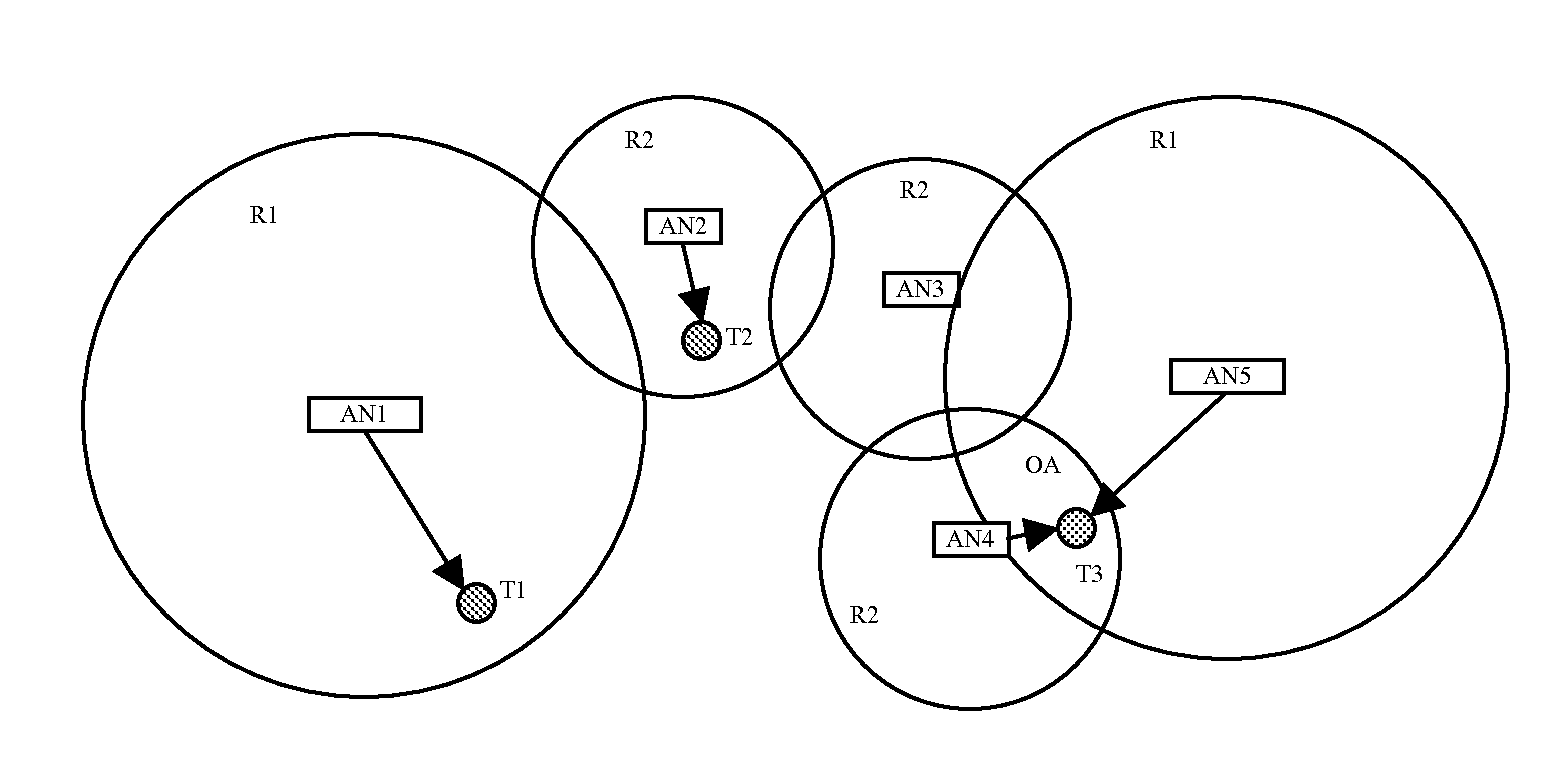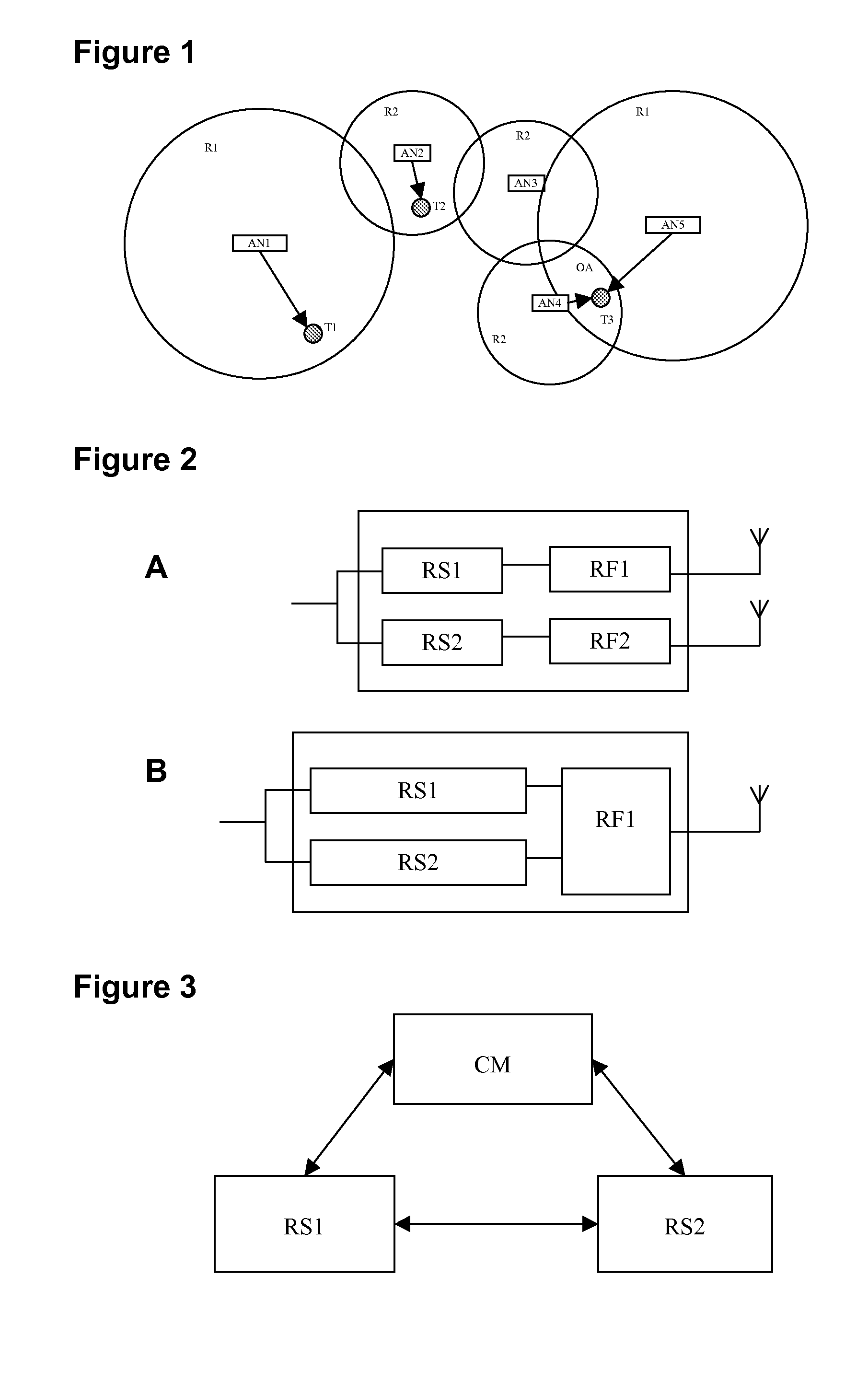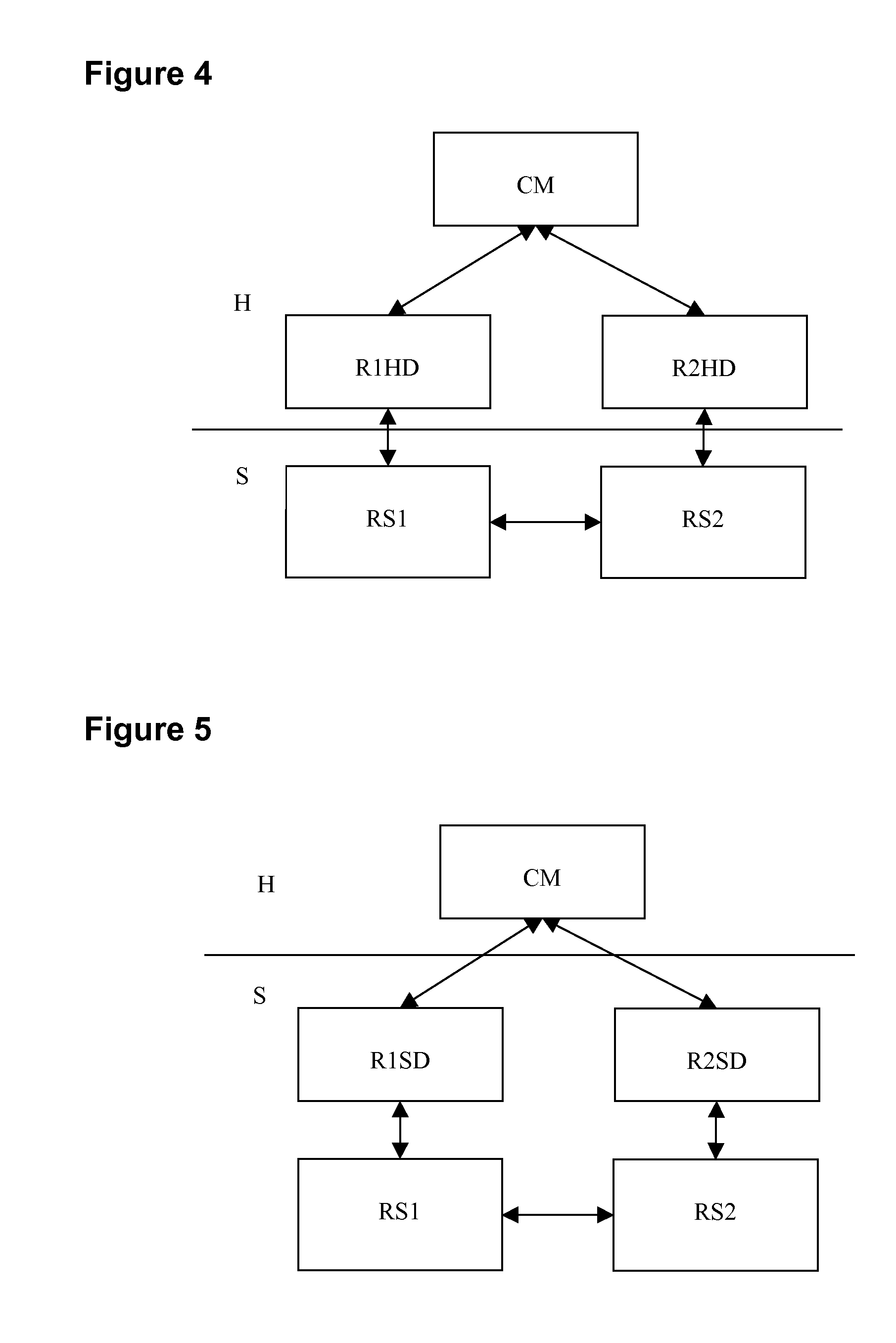Method and system for radio access technology monitoring in a wireless communications system
a wireless communication system and radio access technology technology, applied in the field of wireless communications networks, can solve the problems of harming the reception of wimax signals, no monitoring of the quality of service and no solution of the quality of the preferred rat link
- Summary
- Abstract
- Description
- Claims
- Application Information
AI Technical Summary
Benefits of technology
Problems solved by technology
Method used
Image
Examples
Embodiment Construction
[0046]FIG. 3 shows a generic system architecture that may be used in a wireless communications equipment to implement a method for RAT monitoring according to an embodiment of the disclosure. Two RAT subsystem modules RS1 and RS2, corresponding each to a certain access technology (e.g. WiMAX and WiFi), are connected to each other and to a control module CM that controls and manages said RAT subsystem modules so that one can maintain an active established communications connection with a first RAT while the other carries monitoring of a second alternative RAT. For example, when the wireless communications equipment is located in a wireless system environment in which two different RATs (e.g. WiMAX and WiFi) coexist, the control module CM can select and establish a communications connection with a first RAT (e.g. WiMAX), via the first RAT subsystem module RS1, and scan at least one characteristic of the second RAT available (e.g. WiFi), via the second RAT subsystem module RS2, when th...
PUM
 Login to View More
Login to View More Abstract
Description
Claims
Application Information
 Login to View More
Login to View More - R&D
- Intellectual Property
- Life Sciences
- Materials
- Tech Scout
- Unparalleled Data Quality
- Higher Quality Content
- 60% Fewer Hallucinations
Browse by: Latest US Patents, China's latest patents, Technical Efficacy Thesaurus, Application Domain, Technology Topic, Popular Technical Reports.
© 2025 PatSnap. All rights reserved.Legal|Privacy policy|Modern Slavery Act Transparency Statement|Sitemap|About US| Contact US: help@patsnap.com



